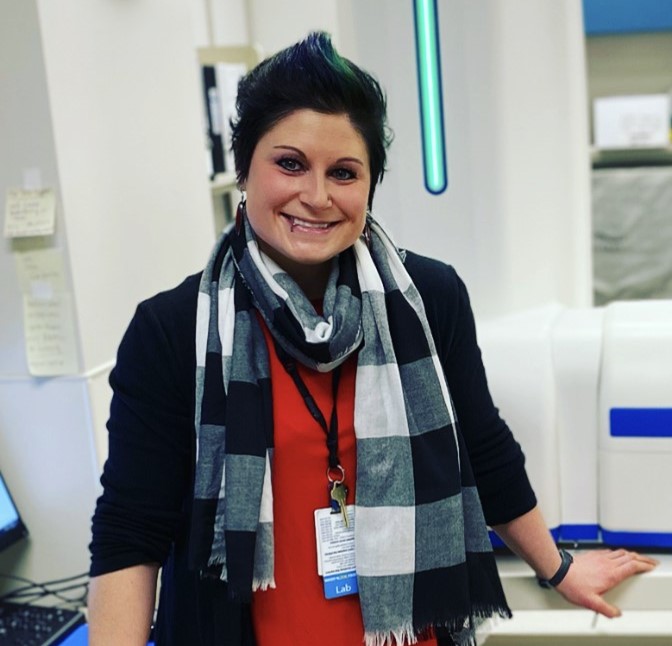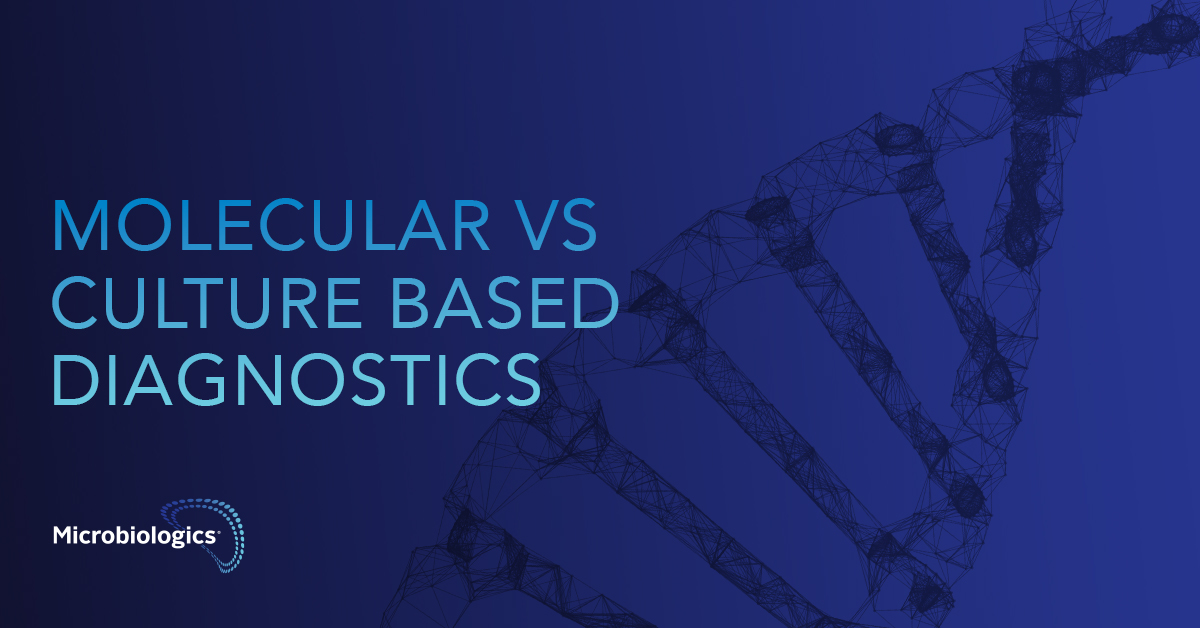An Interview with Julie Laramie, MS-CLS, MLS (ASCP)CM, SMCM
Significant technological advancements have changed the world of clinical diagnostics. For instance, the application of molecular biology to clinical microbiology has decreased turn-around-times for some tests that were previously done by traditional culture-based methods. We interviewed Julie Laramie, MS-CLS, MLS (ASCP)CM, SMCM, to learn more about the nuances between traditional and molecular microbiology methods and to discuss what the future of clinical microbiology may hold.
About Julie Laramie, MS-CLS, MLS (ASCP)CM, SMCM:
Julie Laramie is a progressive laboratory leader and technical specialist with over nine years of molecular and microbiology experience working, leading, teaching and training within hospital laboratory and institutional settings. She is well versed in the technical, logistical, and financial aspects of laboratory testing. Julie has led a variety of clinical quality initiatives while working with interdisciplinary health care teams to positively impact patient care, provider satisfaction, and business outcomes.
Julie holds a Masters of Science degree in Clinical Laboratory Science and a Bachelor’s of Science in Medical Laboratory Science with a minor in Biology. She is certified as a Medical Laboratory Scientist and Microbiology Specialist through the American Society for Clinical Pathology (ASCP).
Outside of work, Julie enjoys baking, snowboarding, mountain biking, Olympic weightlifting, crossfit training, hiking, coaching, teaching, and spending time with friends and family. 
Molecular vs Culture-based:
How has the field of clinical microbiology changed since you started?
Throughout my time in the laboratory there have been many technological advancements. There are instruments that will plate and streak samples for the tech. New organism identification methods, like MADLI-TOF technology, allow for ID within a few hours vs. another day. Additionally, essentially all microbiology labs have molecular instrumentation that allows for an even quicker identification of targeted pathogens and resistance markers.
How have regulations and standards changed?
As advancements have been made and several new practices implemented, regulatory agencies have continued to address this evolving environment by producing up to date guidelines that address current laboratory practices and technical standards.
What is the difference between traditional and molecular methods?
Traditional methods typically look at biochemical characteristics and/or physical traits of pathogenic organisms while molecular methods target portions of the genomes of organisms or other molecular markers associated with pathogens.
a. What are the benefits of traditional and molecular?
With traditional microbiology culturing, the approach is not targeted to specific organisms, so you have an opportunity to grow and identify a wider variety of pathogens that may not be on a standard molecular panel. Another benefit is that with culture, you can quantify organisms; this is not yet available on most molecular panels. Additionally, once the organism has grown and been identified, you also have an opportunity to provide susceptibility results across large panels of antibiotics.
Molecular methodologies are much more sensitive and specific because they amplify and detect target genetic material. Furthermore, molecular testing can commonly provide results days before traditional culture work-ups are finished. Many of the molecular tests also reduce the hands-on time within the laboratory. These characteristics can often greatly impact clinical care, patient satisfaction, healthcare system work-flows, and financial outcomes.
b. What are the limitations of traditional and molecular?
Traditional microbiology has lower sensitivity and specificity, along with longer turnaround times for both identification and susceptibility results compared to molecular methods. Traditional methods also depend on organism viability; some organisms are very difficult to cultivate. Moreover, expertise is needed to read cultures.
Molecular methods have limited scope in that they use specific primers for pathogens and/or antimicrobial resistance markers. These methods do not discriminate between viable and non-viable organisms and are usually more expensive. Also, as noted above, quantities of organisms are not commonly reported.
c. Is there one you prefer and why?
While I am partial to utilizing molecular methods in a variety of clinical scenarios and get excited when I have the chance to discuss the technology, I think both still have their place within medical laboratories – and will for a very long time.
What are common traditional methods that have been replaced with molecular methods?
Some common molecular examples within laboratories that have replaced culture include: MRSA Surveillance testing, Gastrointestinal Pathogen Panels, Streptococcus pyogenes (group A Strep), Bordetella pertussis, Meningitis/Encephalitis Panels, Carbapenemase resistance testing, Streptococcus agalactiae (group B Strep), Chlamydia trachomatis, and Neisseria gonorrhoeae.
Additionally, molecular testing for Mycobacterium tuberculosis and the utilization of Blood Culture Panels provide valuable information with a short turnaround time and are usually used in conjunction with culture.
Most laboratories have transitioned viral cultures to molecular methods as well. Some common examples (in addition to the panels listed above) include Influenza, Respiratory syncytial virus (RSV), Herpes simplex virus (HSV) 1 and 2, Varicella zoster virus (VZV), Cytomegalovirus (CMV), and Enterovirus.
Furthermore, in many labs, molecular methods have replaced a variety of manual parasitology methods. For instance, parasites are included on many Gastrointestinal Pathogen Panels, Trichonomas vaginalis can be identified much more effectively by PCR, and Malaria Speciation Panels are available.
What is your favorite traditional microbiology test to perform?
Any test that had to do with parasitology – malaria smears, worm identification, ova exams, direct fluorescence antibody (DFA) interpretation, etc. However, culture work-ups were always fun and challenging as well. I also enjoyed reading Mycobacterial fluorescent smears….. it’s too hard to pick just ONE favorite!
Which is your least favorite, and would you like to see it progress to a molecular test?
The Hodge test was one of my least favorite traditional methods because of its inaccuracy – it already has progressed to a molecular test!
What do you see as the future of clinical microbiology and how do traditional methods fit into this picture?
I see the technology continuing to advance, and molecular diagnostics continuing to exponentially expand, while bringing tremendous benefits. It may be possible in the future, but I don’t think all traditional methods will be obsolete for a very long while, if ever.
Rapid Microbiology Q & A with Julie:
Why did you get into microbiology and this field?
I knew I wanted to go into the medical field but didn’t care much for patient contact and I liked the sciences. Medical Laboratory Science was a perfect fit! When I started taking classes I really enjoyed microbiology techniques and learning about the pathology of infectious diseases.
Do you have a favorite or interesting microbiology story?
I love parasitology; I once successfully injected India ink into a tapeworm’s uterine pore. That was pretty awesome!!!!
What is your favorite organism and why? Favorite culture?
I would say Listeria monocytogenes is one of MANY favorites – I think it’s cellular, biochemical, and pathological characteristics make it a fun organism to learn about and teach to others.
On the bench, my favorite routine culture type was respiratory cultures. There are so many different bacterial respiratory pathogens to account for, so they required critical thinking, and the work-ups were always fun.
Have you used Microbiologics KWIK-STIK™? What do you like about using KWIK-STIK?
Yes – they are very easy to use! Within the lab, we used them for QC practices and verifications. I was able to always count on the viability of the organisms.






0 Comments